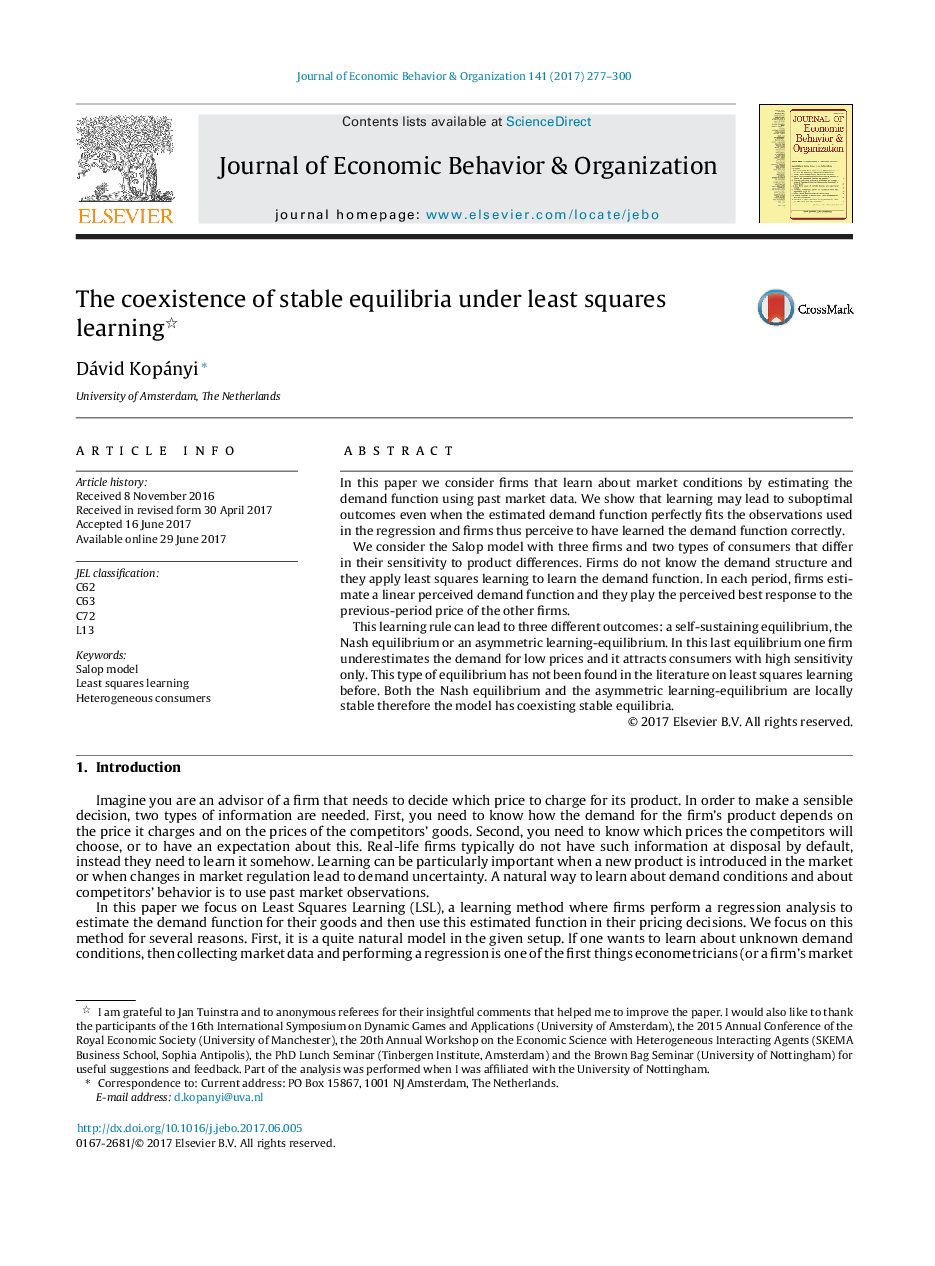| کد مقاله | کد نشریه | سال انتشار | مقاله انگلیسی | نسخه تمام متن |
|---|---|---|---|---|
| 5034405 | 1471626 | 2017 | 24 صفحه PDF | دانلود رایگان |

- Firms estimate an unknown demand function from market observations.
- This can lead to misperceived demand functions even when firms face a perfect fit.
- Some firms may involuntarily disregard certain market segments.
- This leads to lower profit for these firms and to lower total surplus.
In this paper we consider firms that learn about market conditions by estimating the demand function using past market data. We show that learning may lead to suboptimal outcomes even when the estimated demand function perfectly fits the observations used in the regression and firms thus perceive to have learned the demand function correctly.We consider the Salop model with three firms and two types of consumers that differ in their sensitivity to product differences. Firms do not know the demand structure and they apply least squares learning to learn the demand function. In each period, firms estimate a linear perceived demand function and they play the perceived best response to the previous-period price of the other firms.This learning rule can lead to three different outcomes: a self-sustaining equilibrium, the Nash equilibrium or an asymmetric learning-equilibrium. In this last equilibrium one firm underestimates the demand for low prices and it attracts consumers with high sensitivity only. This type of equilibrium has not been found in the literature on least squares learning before. Both the Nash equilibrium and the asymmetric learning-equilibrium are locally stable therefore the model has coexisting stable equilibria.
Journal: Journal of Economic Behavior & Organization - Volume 141, September 2017, Pages 277-300